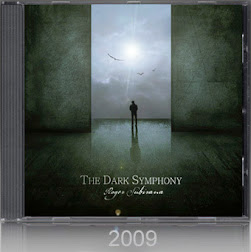A novel that shows us how words can still move mountains…
It was April 2003 in the capital of Iraq; two days after the invasion; the Baghdad National Museum is a street market, its doors wide open, offering its treasures to everyone wanting to steal them. When Ahmed Sadoun, an Iraqi, stole an old clay bowl on behalf of some British customers, he had no idea of the course of events he had just set in motion. His act would trigger a series of happenings plotted by men working in the shadows to plunder Man’s most valued, yet most forgotten asset: Sound.
After the first chapter, the action takes place in a variety of settings: Baghdad, Cambridge, St Catherine’s Monastery in Egypt, and ultimately in Jerusalem and its environs.
After the first chapter, the action takes place in a variety of settings: Baghdad, Cambridge, St Catherine’s Monastery in Egypt, and ultimately in Jerusalem and its environs.
Three Mandaic bowls and a gold amulet are the key elements that take us on an adventure packed with characters moving behind the scenes, plotting to seize the power locked in an ancient Mandaic alphabet.
Never before has anybody attempted to steal words from the voices that move the world, filling us with agonising pain or flooding us with tears of joy. But this is precisely what Professor Samuel Sinclair intends to do. To achieve this, he will have to manipulate the Mandaeans, the traditional trustees of a Gnostic faith, unique in the world, which has survived centuries of persecution. This faith, which predates Christianity, is fated to disappear in the 21st century because of religious intransigence.
The Mandaeans have their roots in antiquity, dating back to Egyptian times. They lived in Jerusalem during the first century AD, when John the Baptist was preaching in the River Jordan. They believe he was the fourth and last prophet, and say he was sent to the world to heal the sick and resuscitate the dead. Almost all the characteristics attributed to Jesus by Christianity were attributed by the Mandaeans to their prophet, John.
Never before has anybody attempted to steal words from the voices that move the world, filling us with agonising pain or flooding us with tears of joy. But this is precisely what Professor Samuel Sinclair intends to do. To achieve this, he will have to manipulate the Mandaeans, the traditional trustees of a Gnostic faith, unique in the world, which has survived centuries of persecution. This faith, which predates Christianity, is fated to disappear in the 21st century because of religious intransigence.
The Mandaeans have their roots in antiquity, dating back to Egyptian times. They lived in Jerusalem during the first century AD, when John the Baptist was preaching in the River Jordan. They believe he was the fourth and last prophet, and say he was sent to the world to heal the sick and resuscitate the dead. Almost all the characteristics attributed to Jesus by Christianity were attributed by the Mandaeans to their prophet, John.
They believe their alphabet to be magical and sacred, which is why they communicate in Mandaean, a language that even now, only they are able to understand. They use the letters to write spells and incantations in small bowls that they use to banish demons from their homes. One of these demon-trapping bowls is a thread that runs throughout the plot of the novel.
The Mandaean alphabet or Abagada, the most ancient syntax that can still be heard, will once again unleash its full power. Very few men have the knowledge required to achieve this, and Zakaria Asgari, a Mandaean priest, is one of them.
However, he is not the only person trying to grasp this power. Inside the walls of his old office in Cambridge, Professor Samuel Sinclair is struggling to fit together the pieces of the puzzle that will take him to the top of the academic pyramid. He is assisted by his protégée, young oriental studies student Andrea Jacobs, and Martin Crown, the sinister director of the Saint John's Christians' Association.
In this race against time, researcher Victor Lavine will do all he can to foil his aspirations by being the first to unravel the clues hidden in the sacred alphabet. He will discover that Jerusalem is full of hidden nooks and crannies with a connection to the Mandaeans, and, thereby, their last prophet, John the Baptist.
The Mandaean alphabet or Abagada, the most ancient syntax that can still be heard, will once again unleash its full power. Very few men have the knowledge required to achieve this, and Zakaria Asgari, a Mandaean priest, is one of them.
However, he is not the only person trying to grasp this power. Inside the walls of his old office in Cambridge, Professor Samuel Sinclair is struggling to fit together the pieces of the puzzle that will take him to the top of the academic pyramid. He is assisted by his protégée, young oriental studies student Andrea Jacobs, and Martin Crown, the sinister director of the Saint John's Christians' Association.
In this race against time, researcher Victor Lavine will do all he can to foil his aspirations by being the first to unravel the clues hidden in the sacred alphabet. He will discover that Jerusalem is full of hidden nooks and crannies with a connection to the Mandaeans, and, thereby, their last prophet, John the Baptist.
A barely legible inscription in a tomb near the cemetery on the Mount of Olives in Jerusalem impels him to visit Ein Kerem, a town dedicated to John the Baptist. After discovering the cave where John's followers were baptised, he will have to excavate the foundations of an ancient gate in the city walls of Jerusalem that belonged to the Essenes. Only then will he understand that today’s Mandaeans were related to the Essenes, the mystical sect responsible for writing the Dead Sea Scrolls.
However, not all these manuscripts were written on sheets of parchment or papyrus. One, very special manuscript, was created using a material too costly for these impoverished mystics: The Copper Roll discovered in Qumrán more than half a century earlier. This roll gives an exceptional twist to the novel, with the discovery of a revealing hypothesis regarding the exact location of the fabulous hidden treasure that archaeologists have been seeking for fifty years.
However, the 100 gold ingots they will find in a strange tomb in Qumrán, which can nowadays be visited, are not the end of the novel. Behind this spectacular discovery lies an even greater mystery connecting the Mandaeans with Egypt, the land of the pharaohs.
However, not all these manuscripts were written on sheets of parchment or papyrus. One, very special manuscript, was created using a material too costly for these impoverished mystics: The Copper Roll discovered in Qumrán more than half a century earlier. This roll gives an exceptional twist to the novel, with the discovery of a revealing hypothesis regarding the exact location of the fabulous hidden treasure that archaeologists have been seeking for fifty years.
However, the 100 gold ingots they will find in a strange tomb in Qumrán, which can nowadays be visited, are not the end of the novel. Behind this spectacular discovery lies an even greater mystery connecting the Mandaeans with Egypt, the land of the pharaohs.
The characters in the novel will need to visit Amarna, ancient capital of the famous heretic pharaoh Akenaton, to search for the real power imprisoned in the Mandaean alphabet among its ruins. Following the instructions given to him by the Mandaean priests, Victor Lavine will be able to uncover what led Professor Sinclair to risk his own life and take possession of the words. And there, in a dark underground crypt, a colossal statue carved in gold will reveal to him the secret of how to move mountains.
The Sacred Alphabet is a fast-paced action novel that you just can’t put down. Each scene interweaves with the next, keeping readers’ attention, becoming more gripping with every page turned. Adventure and entertainment go hand-in-hand in this book, which shows us how words can still move mountains.
The Sacred Alphabet is a fast-paced action novel that you just can’t put down. Each scene interweaves with the next, keeping readers’ attention, becoming more gripping with every page turned. Adventure and entertainment go hand-in-hand in this book, which shows us how words can still move mountains.











0 comments:
Post a Comment